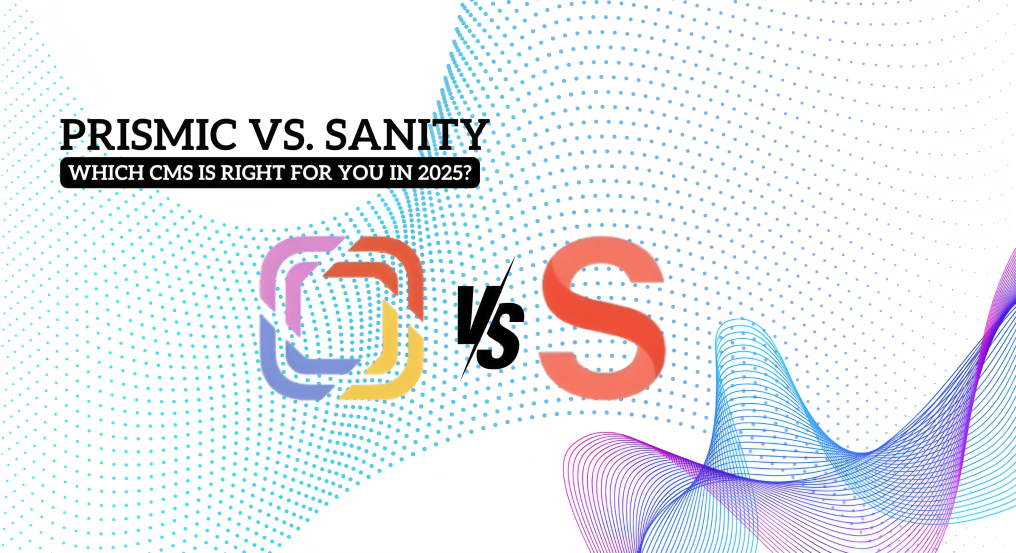
Picking the right headless CMS can feel overwhelming – like scrolling through endless options on a dating app. You want flexibility, speed, and a seamless content experience, but which platform delivers? If you’re torn between Prismic and Sanity, you’re not alone.
Both promise cutting-edge content management, but their strengths cater to different needs. While Sanity powers real-time collaboration for brands like PUMA, Prismic helps companies like AXA streamline content across multiple websites.
Let’s break it down. We’ll compare content modeling, API architecture, collaboration tools, and scalability so you can choose the CMS that truly fits your workflow. Plus, we’ll highlight when WordPress might still be your best option.
Think of Prismic as the LEGO set of content management. It’s modular, user-friendly, and designed for fast, flexible content creation.
With Prismic, marketing teams can build and manage pages without developer bottlenecks, making it a great choice for campaign-driven websites.
If Prismic is a LEGO set, Sanity is the whole workshop – offering complete control over content structures.
Sanity’s API-first approach makes it ideal for large-scale projects needing deep customization and multi-platform publishing.
| Feature | Prismic | Sanity |
| Ease of Use | User-friendly, low learning curve | Steeper learning curve, more customization |
| Content Modeling | Slice-based, modular components | Fully customizable structured data |
| Collaboration | Basic, suited for marketing teams | Real-time editing, ideal for global teams |
| Best For | Quick deployment, marketing websites | Large-scale content operations |
| Pricing | Affordable | Potentially Higher |
Prismic is perfect for teams who need speed and simplicity, while Sanity shines in complex content ecosystems where deep customization is required.
Sanity and Prismic cater to different content needs, and their strengths depend on your team’s workflow.
Sanity: A Playground for Developers
Sanity is built for flexibility, making it ideal for complex content structures. Its Content Lake architecture allows teams to create intricate relationships between products, authors, and user-generated content. This makes it a powerful tool for developers and content strategists who need full control over data modeling, especially in web design projects that require dynamic content.
One of Sanity’s standout features is real-time collaboration. Multiple users can work on the same document without fear of overwriting changes, making it perfect for distributed teams. However, this level of customization comes with a trade-off – it often requires more hands-on development work to set up and manage.
Prismic: A Ready-to-Go Toolkit
Prismic takes a more structured approach with its Slice Machine, allowing content teams to build pages using reusable components called “slices.” This is a game-changer for marketing teams because:
However, while Prismic makes content management smooth and efficient, it lacks the deep flexibility of Sanity for handling complex relationships. If your web design needs are straightforward, Prismic’s simplicity is a major advantage. But for intricate data structures, Sanity may be the better fit.

Prismic: Easy and Efficient
Prismic keeps things simple yet effective, using Slices to let content teams build pages visually. This approach works well for eCommerce, landing pages, and marketing content where rapid updates are key.
Sanity: Fully Customizable
Sanity allows total control over content structures, supporting multi-platform publishing with intricate relationships between products, authors, and user-generated content. However, this flexibility means more development time upfront.
If your workflow requires multi-step approvals and custom automation, Sanity’s flexibility gives it the edge.
Both platforms offer powerful API solutions, but their approach differs:
For developer-heavy teams, Sanity’s APIs provide unmatched control, while Prismic’s setup is faster for non-technical users.
When it comes to enterprise scalability and security, both Sanity and Prismic offer strong solutions. Sanity runs on Google Cloud, ensuring high availability, real-time data syncing, and enterprise SLAs, making it a reliable choice for businesses handling large-scale content operations.
Prismic, on the other hand, relies on a global CDN, which guarantees fast content delivery and uptime. Both platforms adhere to SOC 2, GDPR, and enterprise security standards, but Sanity’s ISO 27001 certification gives it an edge for industries with strict compliance requirements. Choosing the right CMS depends on your business needs, especially if you’re integrating it with a web development project that requires seamless performance and security.
Neither platform offers fixed pricing for enterprise plans – you’ll need to request a custom quote. However, consider these hidden costs:
If you’re working on a large-scale web design project, choosing the right platform is crucial. While both deliver strong ROI, the key question is: What’s the cost of choosing the wrong one? Investing in the right solution-or ensuring you hire a web developer when needed—can save time, effort, and long-term expenses.
Despite the power of Prismic and Sanity, WordPress still dominates for enterprises needing:
For content-heavy businesses, WordPress offers unmatched scalability, ease of use, and cost-effectiveness – especially when paired with expert WordPress maintenance services.

Pick Prismic if you need a fast, user-friendly CMS for marketing teams, campaign-driven sites, or eCommerce.
Choose Sanity if you require deep customization, real-time collaboration, and multi-platform content delivery.
Consider WordPress if you manage large-scale publishing or multiple brands-it remains the most versatile option for content-heavy businesses.
Still unsure? The right CMS is the one that makes your workflow easier, not harder. Define your content needs, test both platforms, and make an informed choice.
No matter which CMS you choose, having a well-structured website is key to maximizing its potential. If you need expert web design and development services, MindBees can help you build a seamless, high-performing digital experience tailored to your needs.